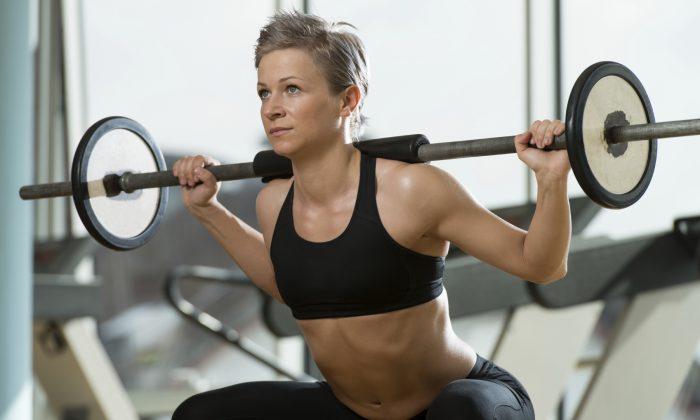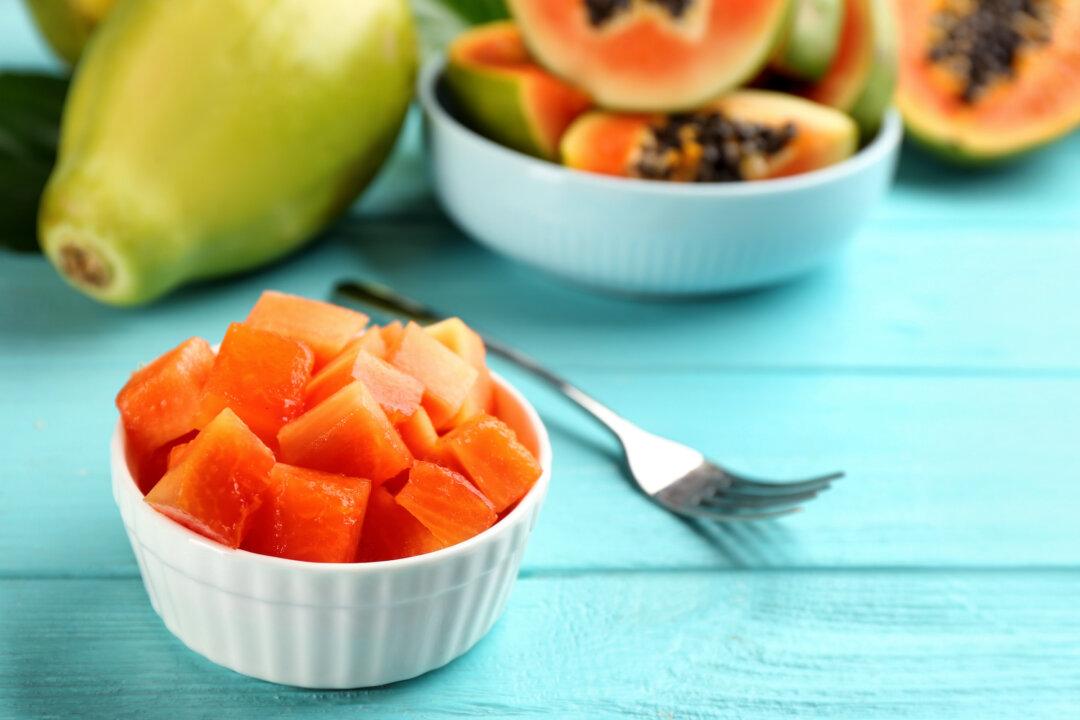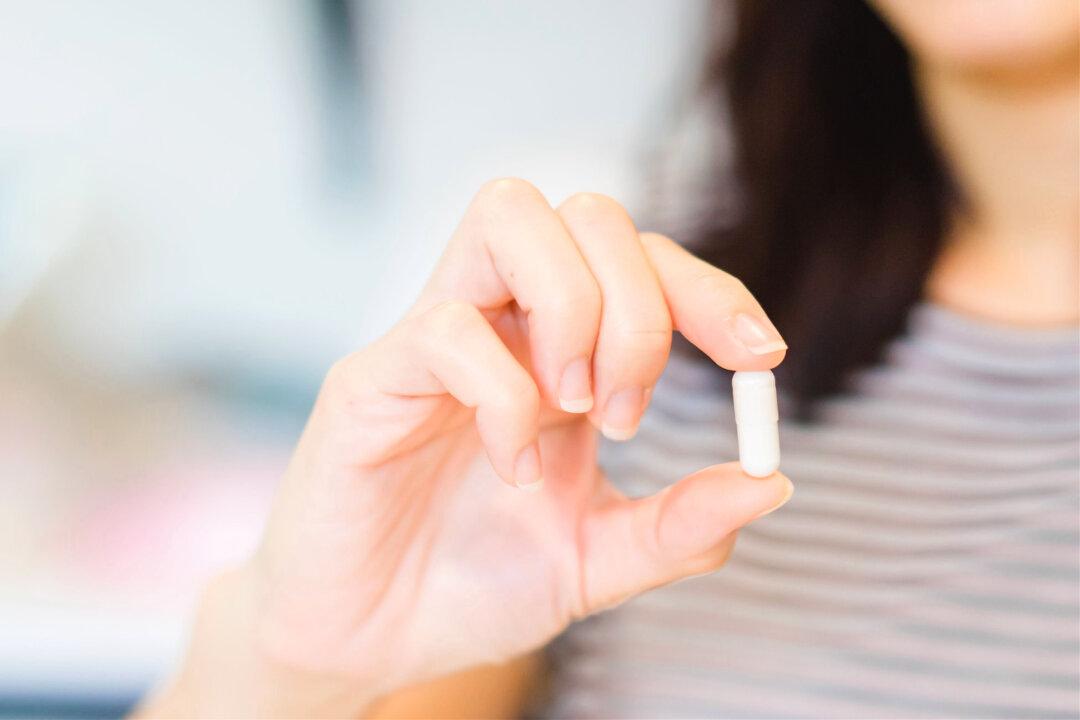If you’re not yet doing squats as part of your regular fitness routine, what are you waiting for? As an exercise for building leg strength, squats are phenomenal, but they are so much more than simply a “leg workout.”
Did you know, for instance, that squats work virtually every muscle in your body and prompt a beneficial hormonal response in your body due to their intensity?
When done properly,
squats trigger the release of testosterone and human growth hormone in your body, which are vital for your muscle growth and will also help to
increase testosterone, and improve muscle mass when you train other areas of your body aside from your legs.
Squats actually promote body-wide muscle building by catalyzing an anabolic environment, which primes your muscles for growth.
Proper Form Is Key to Getting the Most Out of Your Squats
There are many squat variations you can use to alter the intensity and target areas of your workout. But before we get to those, it’s important that you’ve mastered the basic squat first.Squats have long been criticized for being destructive to your knees, but research shows that when done properly, squats actually improve knee stability and strengthen connective tissue. Again, proper form is key to both preventing injury and increasing the benefits.
In the video below, personal trainer and coach Darin Steen demonstrates safe squat techniques for beginner, intermediate, and advanced. A basic squat is performed as follows:
- Warm up
- Stand with your feet just over shoulder width apart
- Keep your back in a neutral position, and keep your knees centered over your feet
- Slowly bend your knees, hips, and ankles, lowering until you reach a 90-degree angle
- Return to starting position -- repeat 15-20 times, for 2-3 sets for beginners (do this two or three times a week)
- Breathe in as you lower, breathe out as you return to starting position
6 Squat Exercises to Build Total-Body Strength
Once you’ve mastered the basic squat, it’s time to expand your workout. The Huffington Post shared these six squat variations you can try (keep in mind that these are not meant to be done in one workout, and get progressively more challenging as you move down the list).1. Isolated Squat Hold
This exercise will help you to improve stability and strength.
“How to:The set-up and lowering part of this move is just like the bodyweight [basic] squat, but things start to change once we reach the bottom. Instead of standing back up, sink into that squat and hold it. Keep all of the weight in your heels, while driving the knees and hips open. Be sure to maintain an upright body position with your chest up, shoulders back and down, and core engaged. Sets: 4, Reps: 5 pausing 30 seconds at the bottom of each rep, Rest: 30 seconds”
2. Jump Squat
This is a plyometric exercise that can help improve your strength.
“How to: Kick things off in the basic bodyweight squat position… and execute the first part of the squat, until we bottom out. With your hips back and butt down, notice your hamstrings and glutes will tighten and activate. Release that tension by driving your hips forward and your arms up towards the sky, while jumping off of the ground. Return to the ground softly and sink right back into the squat before heading into the next repetition. Sets: 4, Reps: 12, Rest: 60 seconds”
3. Goblet Squat
This squat adds a weight, helping to target your lower-body muscles and improve your squat mechanics.
“How to: Grab a dumbbell, kettlebell, medicine ball, or sandbell before preparing to squat. Grasp the weight and hold it at chest height. Next, set your feet shoulder-width apart and engage the upper body. Keep that weight close to your chest while squatting down. At the bottom of the squat the position should resemble the isolate squat hold. Return to standing by driving through the heels, before squeezing the hamstrings, glutes and core. Avoid thrusting your hips forward by slamming your knees to straighten your legs to stand up. Sets: 4, Reps: 12, Rest: 60 seconds”
4. Back Squat
By adding a barbell resting on your back, you can kick up the intensity of your squats. Barbell squats are considered by many to be the “king” of all strength-training exercises.
“How to: To start, adjust the height of the bar so it’s just below shoulder height. Grip the bar wider than shoulder-width and step under the bar so the weight is resting on your upper back. Set up in the same squat position you’ve been using to complete each move so far, making sure to sit back and down while keep the chest upright. Once you’ve hit rock bottom exhale, press through your heels, squeeze your elbows towards your body and return to standing. Sets: 4, Reps: 10, Rest: 2 minutes”
5. Front Squat
This exercise involves a barbell resting across your collarbone in front of your body.
“How to: Setting up in the squat rack, grip the bar with hands at shoulder width and pull your chest to the bar. Drive your elbows up while pulling the bar onto your collarbone. Note: Instead of trying to hold the bar with against your body, let it rest on you to support the weight. Once you’re set up, lower into a squat keeping your core and upper body engaged, while driving your elbows high. Press through the heels, exhale, and drive the elbows up to complete the move. Sets: 4, Reps: 10, Rest: 2 minutes”
6. Overhead Squat
This is an advanced move in which you hold a barbell over your head while performing a squat.
“How to: Grip the bar with hands wider than shoulder width and press the bar overhead. The width of your grip will have the bar six to eight inches overhead with arms extended. For this move your feet can be slightly wider than the hip-width distance used for the other squat movements.
However, the execution of the squat remains intact. While pressing through the bar, begin sitting back and down into the squat. Continue driving your arms up while stabilizing your body at the bottom of the squat. In the squatted position, drive the hips forward and knees open keeping the upper body tall and core engage while returning to standing. Sets: 4, Reps: 10, Rest: 2 minutes”Try Doing Your Squats Slowly to Increase Intensity
Many make the mistake of rushing through their squat exercises too quickly. By slowing down your movement, you actually turn the squats into a high-intensity exercise. This is called
high-intensity interval training, or HIIT, and the latest science confirms that it provides far greater benefits than low-intensity workouts in a fraction of the time—typically 12 to 20 minutes for an entire HIIT routine. The super-slow movement allows your muscle, at the microscopic level, to access the maximum number of cross-bridges between the protein filaments that produce movement in the muscle.
To reap maximum results from your exercise program, it is wise to work out at maximum intensity for about 30 seconds, followed by a 90-second recovery period. Your goal for HIIT is to get your heart rate up to your calculated maximum heart rate. The most common formula for this is to subtract your age from 220. You can incorporate squats, plus a few other compound movements (such as pull-downs, chest presses, compound rows, or overhead presses) as part of a super-slow high-intensity routine.
The Ultimate Squat Using Whole Body Vibrational Training
Whole Body Vibrational Training (WBVT), also known as
Acceleration Training, employs a vibrating platform like the Power Plate that forces your muscles to accommodate, resulting in dramatic improvement in strength, power, flexibility, balance, tone, and leanness.
You can do almost any exercise while standing on the Power Plate and massively improve your results with less effort, because the machine does much of the work “for you.” The vibrational component will passively stimulate your type 2 muscle fibers and help stimulate growth hormone.
A study at Florida International University examined the energy people expended with squats on a Power Plate with the energy they expended doing conventional squats. They concluded that you can get the same metabolic bang for your buck on the Power Plate, using significantly lighter weights, less risk of injury, and possibly faster recovery time. The Power Plate offers the additional advantage of activating more muscles.
Another great thing about the Power Plate is that it can be used safely by nearly everyone, including the elderly, injured, or disabled, because there is benefit to even passively standing or sitting on it. This makes it ideal for helping to strengthen your legs even if you’re unable to perform traditional leg-strengthening exercises like squats.
Squats Can Help You Burn Fat and Prevent Injuries, Too
If you’re still on the fence about doing squats, consider that one of the most time-efficient ways to burn more calories is actually to gain more muscle, and squats are one of the best muscle-building exercises there is. For every pound of additional muscle you gain, your body will burn an additional 50-70 calories per day. So, if you gain 10 pounds of muscle, you will automatically burn 500-700 more calories per day than you did before.Squats also work out your core, stabilizing muscles, which will help you to maintain balance, while also improving the communication between your brain and your muscle groups, which helps prevent falls.
Most athletic injuries involve weak stabilizer muscles, ligaments, and connective tissues, which squats help strengthen. Squats also help prevent injury by improving your flexibility (squats improve the range of motion in your ankles and hips).
Squats even improve the pumping of body fluids, aiding in removal of waste and delivery of nutrition to all tissues, including organs and glands. They’re also useful for improved movement of feces through your colon and more regular bowel movements. So while squats are difficult and intense, which is why many loathe them, you'll be generously rewarded for your hard work.
If you’re a beginner, start with just 2-3 sets of squats two or three times a week -- do it more than this and you will miss out on important recovery time. As always, as you develop a workout routine that works for you, remember to listen to your body so it can guide you into a path that will provide you with the most efficient and effective body-wide benefits.







Friends Read Free